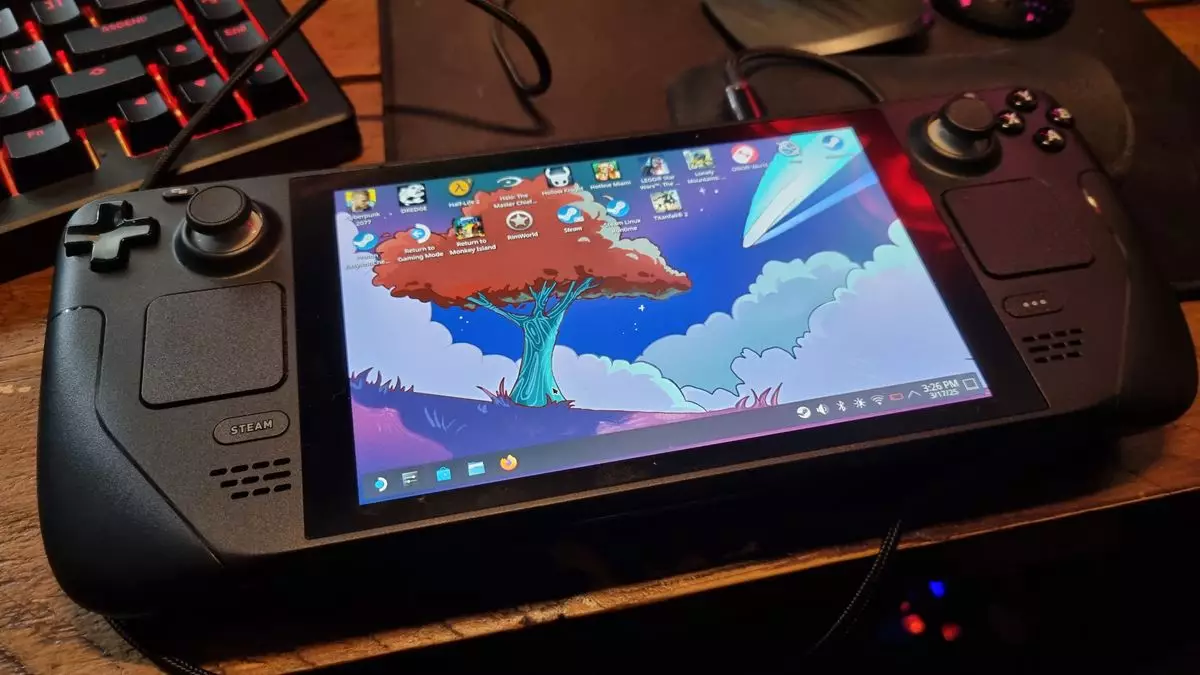SteamOS has established itself as a remarkable niche within the gaming community since its inception. Originally launched in conjunction with the Steam Deck in 2022, this Linux-based operating system has only started to stretch its wings. The anticipation surrounding its introduction into non-Steam Deck handhelds signals a promising shift in the gaming landscape. Recent news regarding the anticipated SteamOS 3.7.0 Preview update, particularly associated with the Lenovo Legion Go S, is set to catapult this operating system towards a broader audience.
As we witness the slow unveiling of support for handheld devices beyond the Steam Deck, it is essential to recognize the implications. This development is not merely a trend; it represents Valve’s commitment to expanding the gaming ecosystem. As the industry evolves, gamers should not have to limit themselves based on hardware compatibility. With the Lenovo Legion Go S serving as a pioneer, the potential for additional handhelds to emerge with SteamOS support is tantalizingly within reach.
Enhancements within the Update
The announcement of SteamOS 3.7.0 Preview is noteworthy for more than just its implications for device compatibility. This update also incorporates a significant upgrade—the introduction of Plasma 6.2.5. This enhanced desktop environment revamps the user interface, bringing aesthetic improvements such as floating panels and a reorganized settings menu. The nostalgic cube effect, reminiscent of early hacker films, adds a stylish touch that appeals to tech enthusiasts.
However, it’s critical to approach this update with tempered expectations. As a Preview version, it functions much like a beta release, inherently inviting occasional hiccups. Personal experiences reveal inconsistencies, such as screen flashing when pressing the power button and sporadic freezes. These technical glitches might dampen the overall experience for the impatient gamer. Nevertheless, the addition of a captivating wallpaper named Scarlet Tree suggests that Valve aims to keep the mood light even amidst bug issues.
Notable bug fixes further illustrate Valve’s responsiveness to user feedback. Improvements in Bluetooth device compatibility, enhancements for Deck Dock display interaction, and reliability upgrades for system updates all demonstrate a commitment to refining the user experience. However, for the average user, the excitement generated by these fixes might not match the allure of new features.
The Competitive Landscape
While Valve is navigating through uncharted territory in expanding SteamOS support, it isn’t the only player in the handheld gaming market. Many manufacturers have adopted alternative operating systems or game launchers designed to interact with Windows 11. These may not integrate with Steam like SteamOS does, yet they have effectively carved a niche by allowing users to launch and categorize games seamlessly.
It raises a crucial question: Is Valve arriving at this party too late? Competitors have established their fanbase with intuitive interfaces that cater to on-the-go gamers. The industry’s technological advancements mean that for many, the convenience of navigating their libraries in Windows can overshadow the streamlined experience offered by SteamOS. Users have become accustomed to viable alternatives, leaving Valve to play catch-up.
However, there remains an undeniable allure to SteamOS that is hard to ignore. The operational synergy with Steam offers an ease that others have yet to replicate, making it an enticing choice for onboard gaming experiences. As more support emerges for handhelds outside of the Deck, Valve may have the opportunity to cement its place in this burgeoning market.
Looking Ahead
The potential for SteamOS to expand into a broader array of handheld devices presents a captivating prospect. Valve may stand on the cusp of a revolutionary phase in mobile gaming, one that could redefine how users interact with their gaming libraries while on the move. As excitement builds around these capabilities, the industry should remain vigilant. The balance between catching up with competitors and harnessing unique offerings could dictate Valve’s success in this not-so-simple evolution.
As we await future developments, it is clear that SteamOS may ultimately find its stride beyond the confines of the Steam Deck. The groundwork is being laid, and the enthusiasm from the community echoes the belief that gaming should be as accessible and engaging as possible, regardless of the device in use. For those who value the essence of handheld gaming, a brighter future may indeed be just around the corner.

